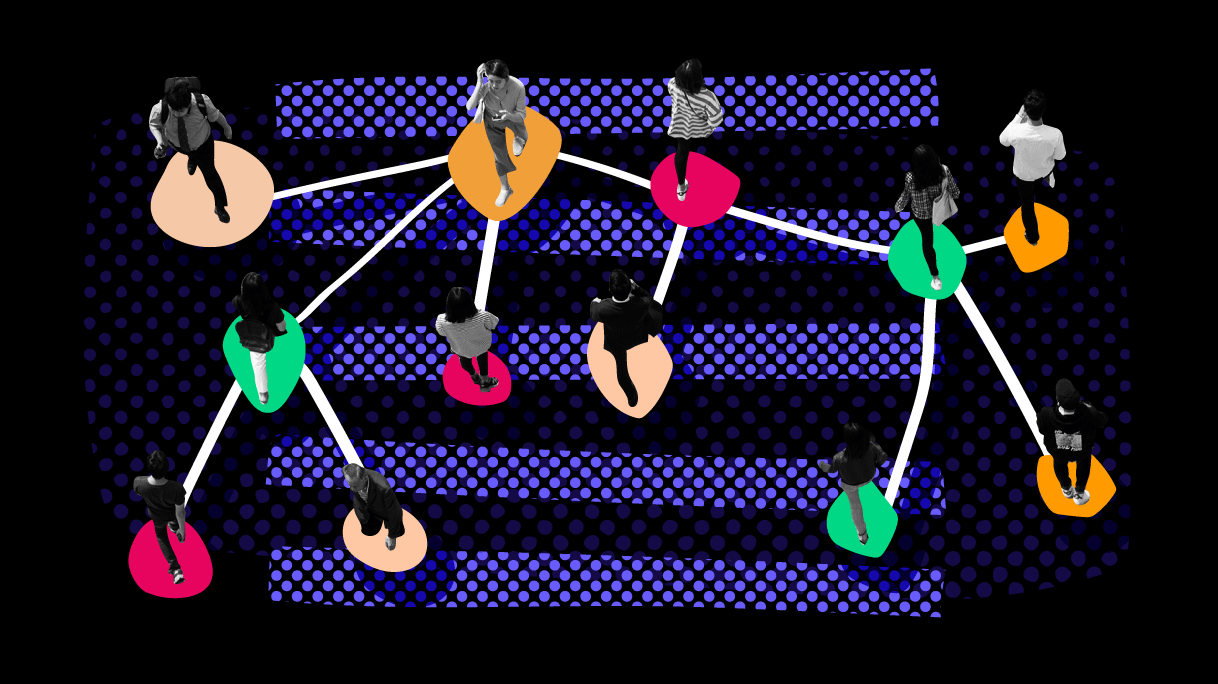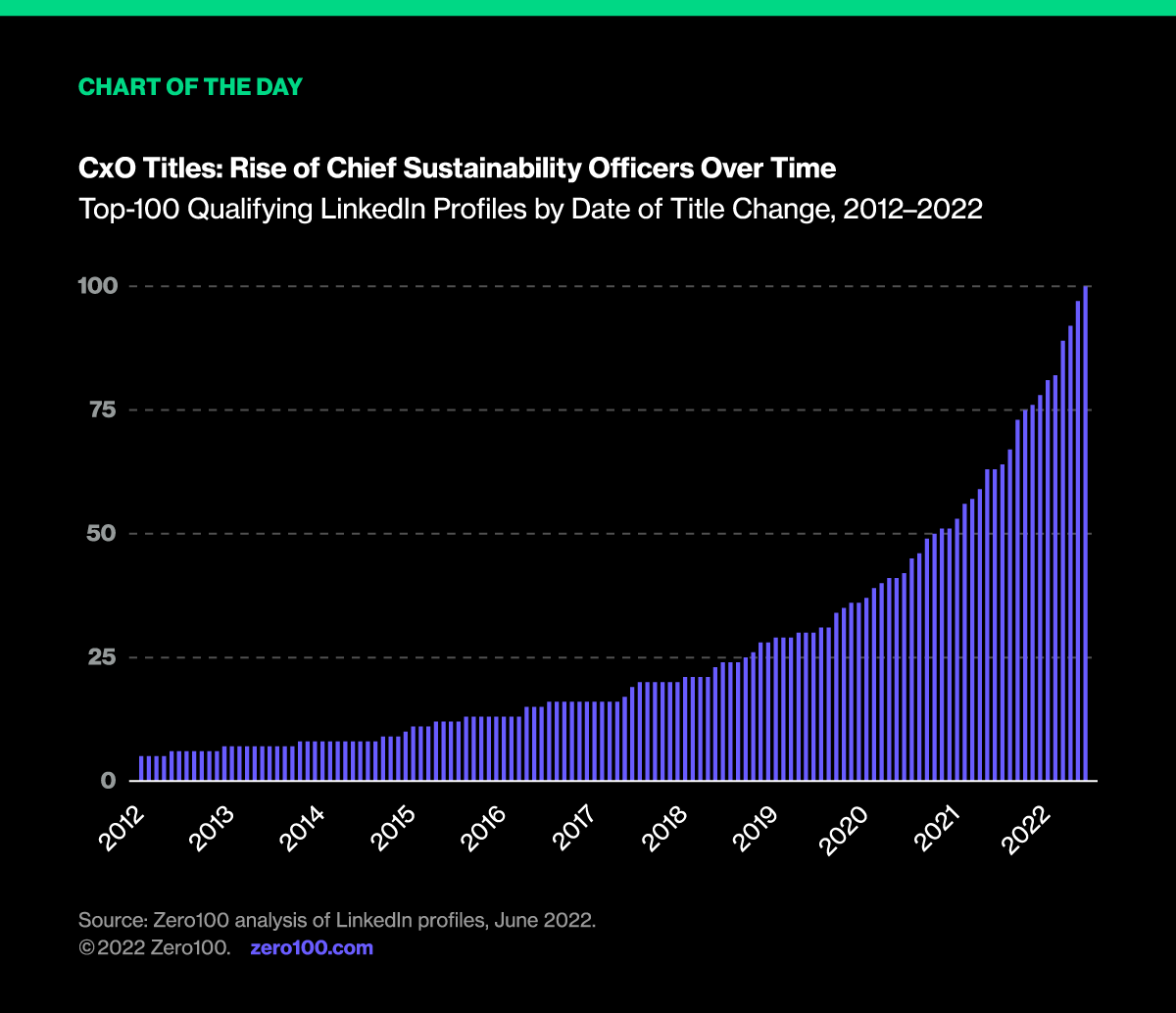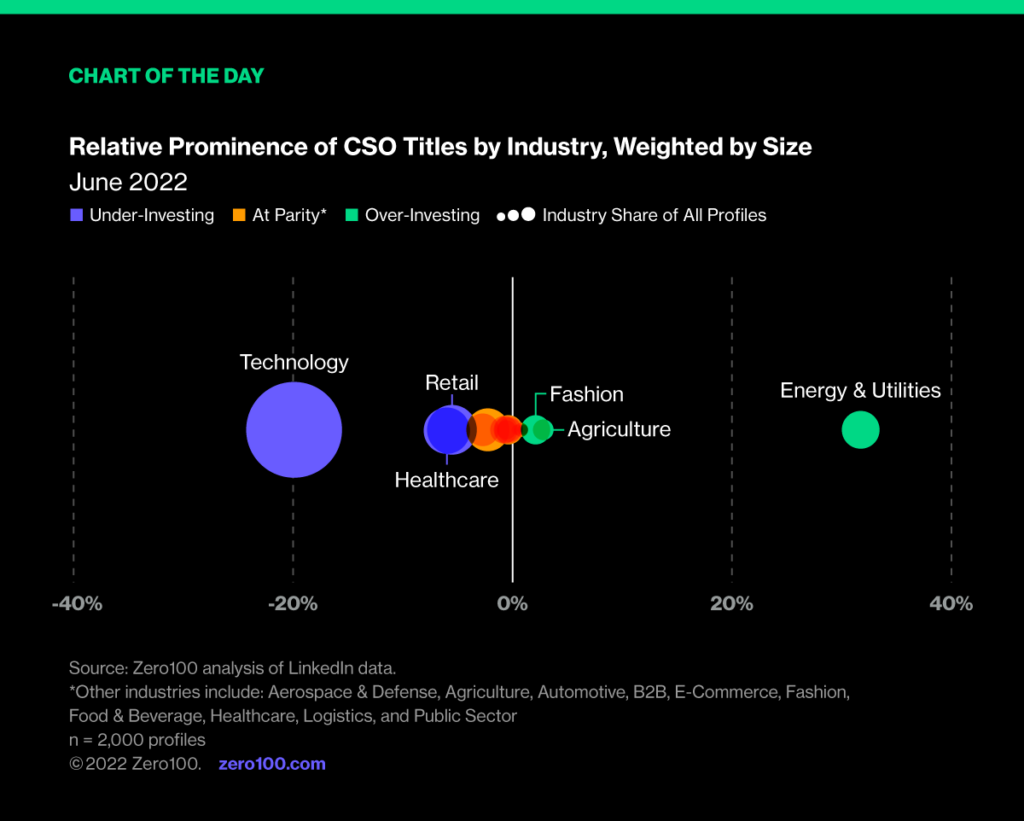
New Research: Organizational Design for ESG Accountability
Our new report explores the rise of the Chief Sustainability Officer, where they fit into existing governance structures, and which industries are over-investing versus under-investing.
Point of View: People
Zero100's continuing research addresses the collision of several mega-trends impacting supply chain, including the digitization of operations (DIGITAL), growing accountability for environmental and social impact (ESG), as well as the organization and development of talent required to effectively respond to new challenges (PEOPLE).
Our continuing Point of View series explores these themes in greater detail—providing the perspective, supporting data, and cross-industry learnings required to address critical questions from the supply chain community. In combination, these perspectives provide the evidence and conceptional frameworks required to tackle the operational challenges of today (and tomorrow).
Back in May, we explored how the role of the Chief Digital Officer (CDO) helped or hindered ongoing digital transformation efforts based on the relative seniority and centralization of that function within supply chain organizations. This month, we deployed similar analysis to explore the role of the Chief Sustainability Officer (CSO), as organizations establish and evolve the governance structure required to enhance ESG accountability.
The Rise of the CSO
Over the past two years, we have observed a dramatic rise in search interest for the role of Chief Sustainability Officer (CSO) on Google, which echoes a four-fold increase in ESG-related queries registered on the search engine since January 2020.
This pattern is emblematic of the rise of Chief Digital Officers (CDO) ten years ago, which followed directly from the coinage of the term “omnichannel” retailing. If anything, the latest game of musical chairs in the C-suite appears to be unfolding faster and with greater urgency. Recent, high-profile examples include Pamela Fletcher at Delta, Patricia Lewis at UnitedHealth, and Robyn Luhning at Wells Fargo.
Based on a sweep of public LinkedIn profiles, the current population of CSOs (~2,000) remains small compared to CDOs (~15,000) – but the doubling time of this population continues to accelerate. A closer review of the Top-100 matching profiles surfaced on the professional network reveal half of current CSOs moved into their new role title within the past 20 months.

Wide Variance by Industry
While the anecdotal evidence of this trend appears both persistent and pervasive, empirical data sourced from LinkedIn demonstrates the wave of newly minted Chief Sustainability Officers (CSOs) is not consistent from industry to industry.
Of the 2,000 public profiles of CSOs available, over 85% are affiliated with 16 industries. In turn, these industries are associated with nearly 98 million profiles (based on current role). If the elevation of CSO roles was broad (and evenly distributed), we would expect the share of individual CSOs by industry to match the share of total profiles by industry. However, at present, only 50% of the industries reviewed are at near-parity (see 0% line in the chart below).
Industries that are under-indexing on CSO roles (relative to their size) include Technology, Healthcare, and Retail – predominately service business models. Industries that are over-indexing on CSO roles include Fashion, Agriculture, and Energy & Utilities – all outsized contributors to the tragedy of the commons. The latter two representing 36% of total U.S. greenhouse gas emission by economic sector. And by some estimates, Fashion alone contributes 10% of annual global carbon emissions (and growing).

So What? Implications...
This analysis underscores the recent ascendency of Chief Sustainability Officers, while reinforcing organizational risks stemming from the current "herd mentality." As with digital transformation, our analysis suggests that before redrawing the current organizational chart, change agents need to focus their due diligence on the comparative ESG readiness of their own enterprise, as well as the wider industry it represents.
As the CSO role continues to proliferate across organizations, key questions for supply chain leaders include:
#1 Does the envisioned ESG & Sustainability leadership role have the requisite authority to punch above its designated weight class?
Zero100 survey data found that as compared to the leadership tasked with Digital Transformation initiatives, there were fewer ESG & Sustainability leaders (27% vs. 37%) who secure a CxO title – and the authority and/or exposure to senior leadership that goes along with it.
#2 Is the current bench of internal CSO candidates experienced enough to step into the prospective role?
Of the Top-100 CSO profiles examined in depth, 21% were graduating from a Vice President role, versus 34% from a more junior Director role. As such, the conventional path in resource-constrained organizations will likely involve an iterative step (versus a skip-level) in the organizational hierarchy – thereby exacerbating the authority problem described above.
#3 Are we being proactive -or- reactive in minting a new CSO role?
In a recent poll, 58% of executives agreed that their organization has overstated sustainability efforts, with Supply Chain & Logistics executives among the most self-critical (65%). At present, industries leading the charge in establishing and popularizing this critical role are (historically) more associated with the problem than the solution. While this over-investment could be viewed as a corrective measure, it could also be construed as a PR solution to an intractable problem (a.k.a. “greenwashing”).
To learn more, read the Report Summary of our latest research.
Note: The Full Version of the report is available to all members of the Zero100 Community through their sign-in credential.
Coming Next: Digital: Trending Supply Chain Terminology